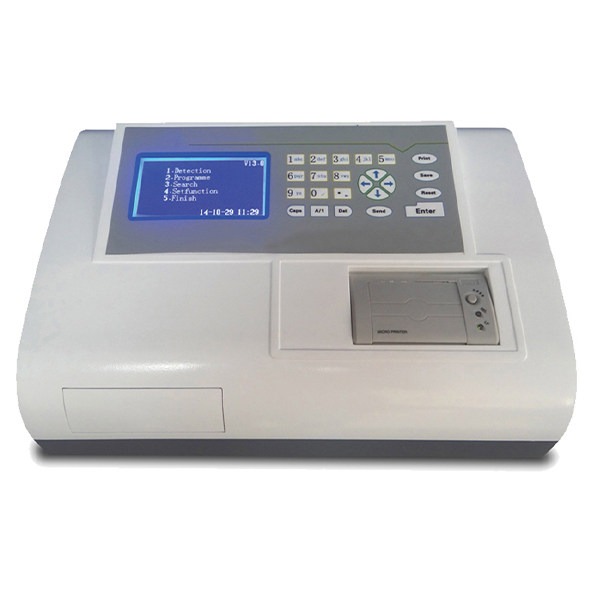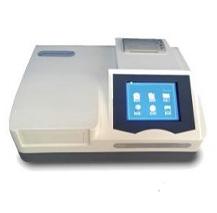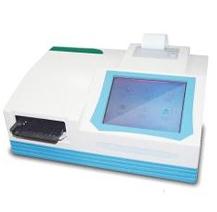Clinical trials represent a critical phase in the journey of medical discovery, transitioning from the controlled environment of the laboratory bench to real-world applications at the bedside. Among the many tools shaping this transition, ELISA microplate readers stand out as invaluable assets and they are essential tools in the development of new drugs and therapies. They are used to measure the concentration of a particular substance in a sample, such as a blood sample. This information can be used to track the progress of a patient in a clinical trial or to measure the effectiveness of a new drug.

1. Biomarker Discovery and Validation by Using ELISA Microplate Readers
In clinical trials, ELISA microplate readers are used to measure the concentration of a variety of biomarkers. Biomarkers are substances that can be used to measure the progress of a disease or the effectiveness of a treatment. Some common biomarkers that are measured with ELISA microplate readers include:
- Antibodies: Antibodies are proteins that are produced by the immune system to fight off infection. They can be used to measure the level of immunity to a particular disease.
- Cytokines: Cytokines are small proteins that are involved in cell signaling. They can be used to measure the level of inflammation in a patient.
- Hormones: Hormones are chemicals that are produced by glands in the body. They can be used to measure the level of a particular hormone in a patient.
ELISA microplate readers can also be used to measure the concentration of drugs in a patient’s blood. This can be helpful for monitoring the effectiveness of a new drug or for adjusting the dosage of a drug.
2. Monitoring Treatment Efficacy by Using ELISA Microplate Readers
In the clinical trial landscape, ELISA microplate readers play a key role in monitoring the efficacy of experimental treatments. Researchers can use these readers to track changes in biomarker levels, providing valuable insights into how a therapeutic intervention impacts the underlying disease processes.
3. High-throughput screening for Patient Stratification by Using ELISA Microplate Readers
Not all patients respond to treatments in the same way, necessitating the identification of subgroups that may benefit more from specific interventions. ELISA microplate readers, with their high-throughput capabilities, facilitate large-scale screening of patient samples. This allows researchers to stratify participants based on biomarker profiles, tailoring treatments to individual needs.

4. Data Accuracy and Reproducibility by Using ELISA Microplate Readers
The reliability of clinical trial results is paramount, and ELISA microplate readers contribute significantly to data accuracy and reproducibility. With precise measurement capabilities and standardized protocols, these instruments ensure consistency across multiple sites and studies, enhancing the robustness of clinical findings.
5. Multiplexing: A Comprehensive Approach Provided by ELISA Microplate Readers
Modern clinical trials often demand the simultaneous analysis of multiple biomarkers to obtain a comprehensive view of a patient’s health status. ELISA microplate readers equipped for multiplexing provide a cost-effective and efficient solution, allowing researchers to assess various biomarkers in a single run.
6. Future Directions and Integration with Precision Medicine by Using ELISA Microplate Readers
As precision medicine gains momentum, the role of ELISA microplate readers in tailoring treatments to individual patient profiles is likely to expand. Integration with other technologies, such as genomics and proteomics, holds promise for a more personalized approach to clinical trials, ushering in a new era of targeted and effective therapies. Some of the future directions of ELISA microplate readers in clinical trials include:
- The development of new assays for measuring biomarkers that are not currently available.
- The use of ELISA microplate readers to measure the concentration of drugs in individual cells.
- The use of ELISA microplate readers to measure the concentration of biomarkers in real time.

Conclusion
From bench to bedside, ELISA microplate readers have become indispensable companions in the journey of medical discoveries from the laboratory to clinical applications. Their role in biomarker discovery, treatment monitoring, and patient stratification underscores their significance in shaping the future of healthcare. As technology continues to evolve, these instruments will play a pivotal role in advancing precision medicine and improving patient outcomes in clinical trials and beyond.
